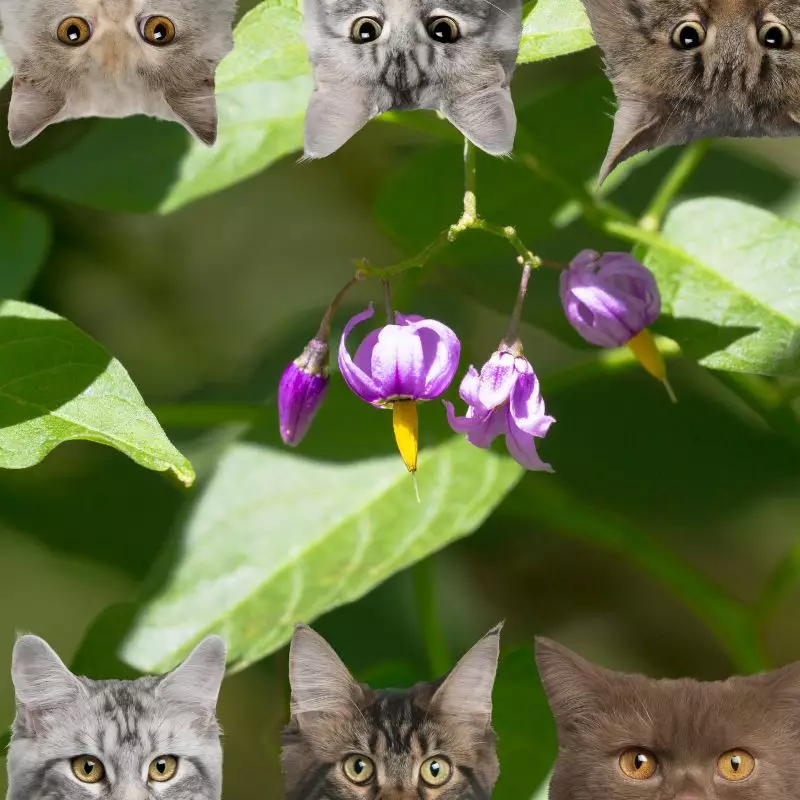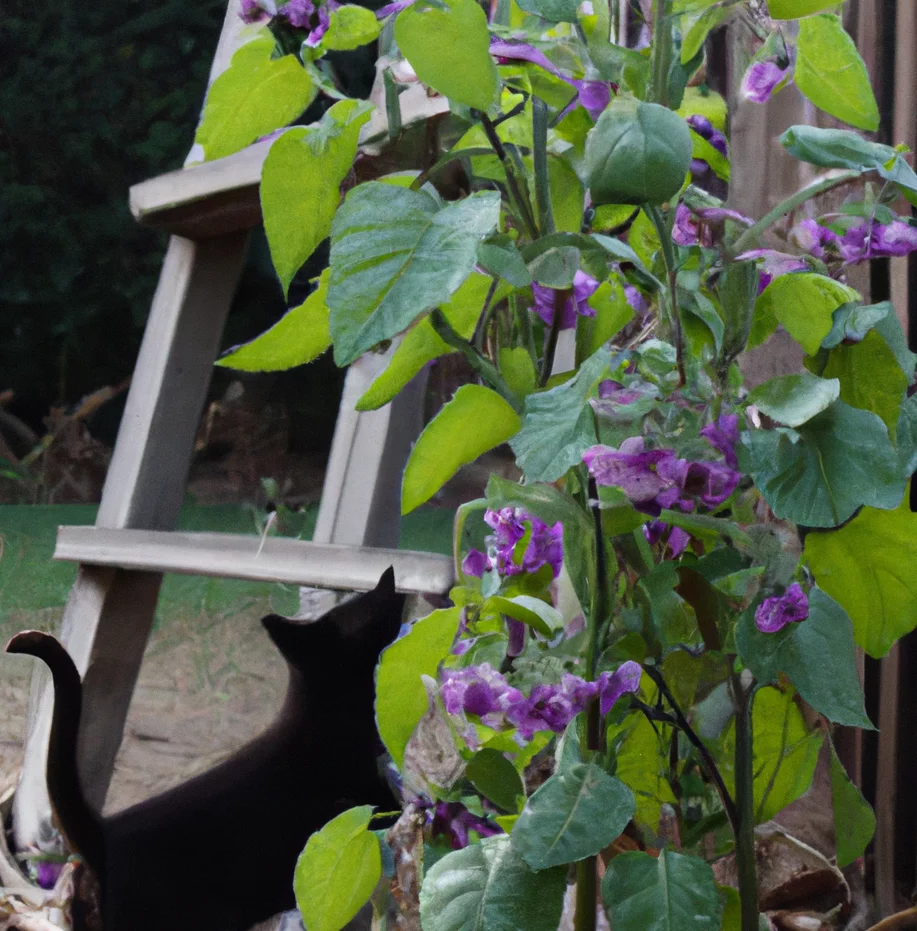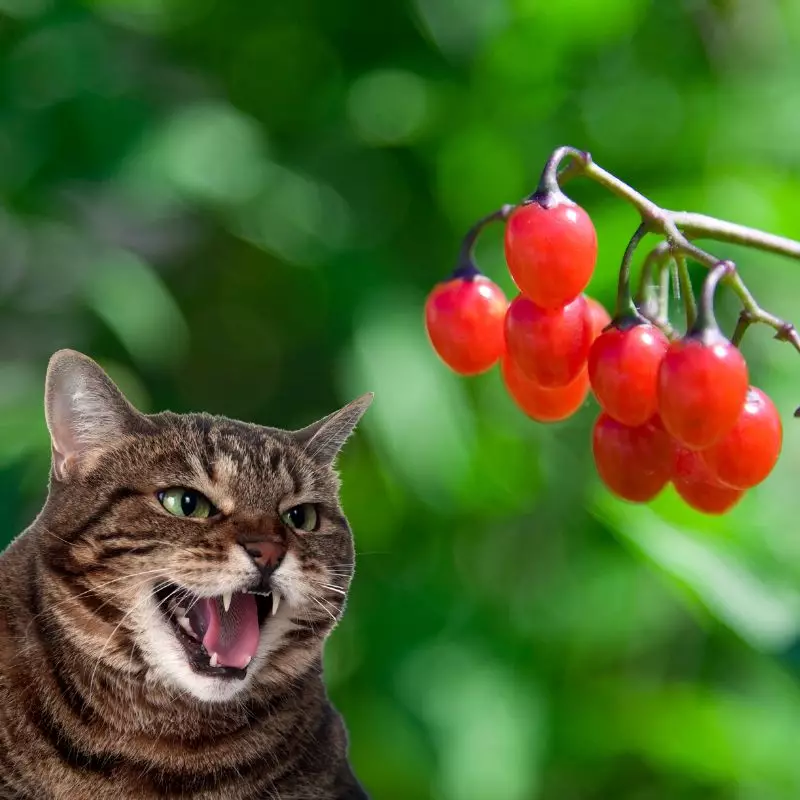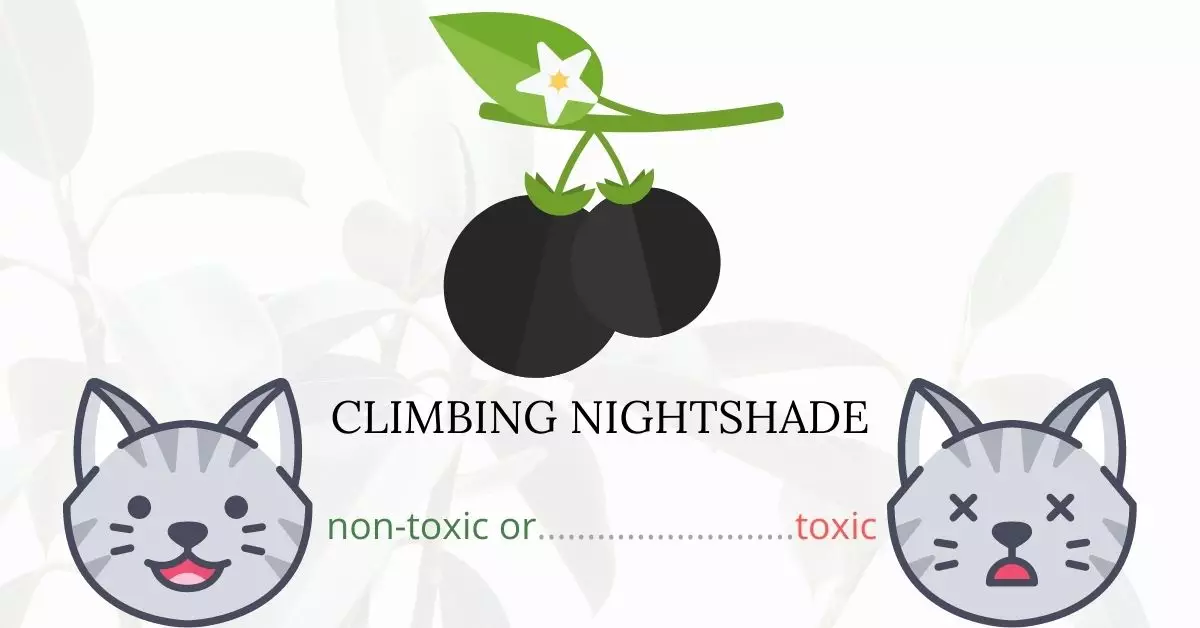Absolutely, Climbing Nightshade is toxic to cats. Commonly recognized by various names such as European Bittersweet, Deadly Nightshade, Violet Bloom, and others, this plant contains solanine and dulcamarine – two harmful substances present in all parts of the plant. Particularly, the plant’s berries pose the greatest threat, especially those that are not fully matured.
This article is the culmination of dedicated collaboration with a team of experienced DVMs (doctors of veterinary medicine). Through their expertise and contributions, we aim to provide accurate and up-to-date information regarding the potential risks associated with Climbing Nightshade and its effects on feline health. Additionally, our research is supplemented by insights from high-authority websites like ASPCA and PetMD to ensure a comprehensive understanding of every plant’s risks.
Clinical Signs of Climbing Nightshade Poisoning in Cats

When a cat comes into contact with, inhales the scent of, or ingests the Climbing Nightshade plant, a variety of clinical signs may manifest due to the plant’s toxic compounds, mainly solanine and dulcamarine. Recognizing these signs early can be crucial for your feline’s wellbeing. Here’s a breakdown of these symptoms and the reasons behind their occurrence:
- Hypersalivation: This occurs due to the body’s natural response to expel or dilute the toxic compounds it has ingested.
- Drowsiness: The toxins can affect the cat’s central nervous system, leading to lethargy or drowsiness.
- Diarrhea: The gastrointestinal system tries to rid itself of the toxic elements, leading to diarrhea.
- Dilated pupils: A reflection of the body’s nervous system response to the toxins.
- Breathing problems: The respiratory system can be compromised due to the plant’s toxic effects.
- Increased heart rate: As a result of the body’s attempt to fight off the toxin, a cat’s heart rate can accelerate.
- Coordination issues: The toxins can interfere with neurological functions, leading to movement and balance problems.
- Confusion: Reflects the neurotoxic effects on the brain.
- Fatigue: The cat’s body is exerting energy to combat the toxic effects, leading to exhaustion.
- Nasal discharge: A result of the body’s inflammatory response to toxins.
- Central nervous system depression: Due to solanine’s neurotoxic effects, the CNS can become suppressed.
- Trembling: Another manifestation of the toxin’s effect on the nervous system.
- Muscular weakness: The toxins can inhibit muscle functionality, leading to weakness.
- Vomiting: The body’s natural response to expel ingested toxins.
- Paralysis: In severe cases, the toxins can severely affect the nervous system, causing paralysis.
If you observe any of these symptoms in your cat after possible exposure to Climbing Nightshade, it’s essential to consult a veterinarian immediately.
First Aid and Treatment of Climbing Nightshade Poisoning in Cats

After conducting a complete physical examination and possibly several laboratory tests, the veterinarian will proceed with neutralizing the poison in your cat’s system. This process may include intravenous fluid therapy, inducing vomit, and giving activated charcoal. If your cat is suffering from respiratory and cardiac difficulties, the vet may also give oxygen to stabilize your cat.
Recovery from Climbing Nightshade Poisoning in Cats

Once you’ve got your cat back home, make him feel safe and secure while he recovers. Consult your veterinarian about any dietary modifications you may need to make while his body recovers. For the next few days, the vet may advise sticking to softer meals and plenty of water.
Prevention of Climbing Nightshade Poisoning in Cats
While removing or avoiding to grow climbing nightshade from your backyard will prevent another poisoning incident in your cat, there is still a high chance that your cat will encounter it outdoors. Keep your cat safe and stimulated inside the comfort of your home. You may opt to utilize playpens or cat houses or you can also invest in a cat terrarium. Building additional fences or installing safety nets are also ideal to refrain your cat from wandering far from home.
If you love plants but have cats at home, check out these lists:





